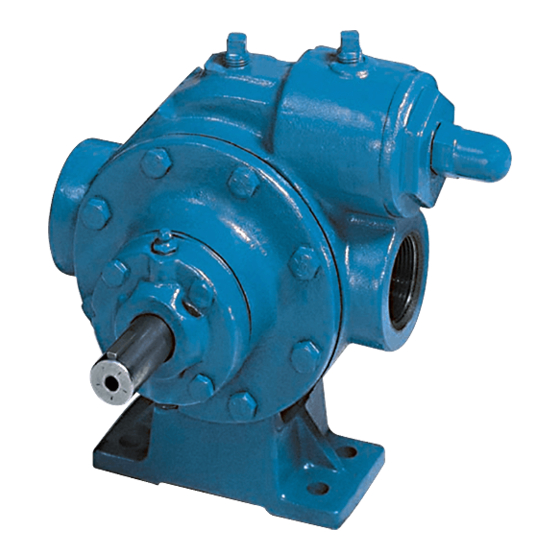Dover BLACKMER CRLR1.25 Инструкции по установке, эксплуатации и техническому обслуживанию - Страница 10
Просмотреть онлайн или скачать pdf Инструкции по установке, эксплуатации и техническому обслуживанию для Водяной насос Dover BLACKMER CRLR1.25. Dover BLACKMER CRLR1.25 12 страниц. Blackmer liquefied gas pumps

following the appropriate procedures and warnings as presented in this manual.
SYMPTOM
Pump Not Priming
Reduced Capacity
Noise
Damaged Vanes
Broken Shaft
TROUBLESHOOTING
Maintenance shall be performed by qualified technicians only,
PROBABLE CAUSE
1. Pump not wetted.
2. Worn vanes.
3. Internal control valve closed.
4. Strainer clogged.
5. Inlet line or valves clogged or too restrictive.
6. Broken drive train (truck mounted pumps).
7. Pump vapor-locked.
8. Pump speed too low for priming.
9. Relief valve partially open, worn or not seating properly.
1.
Pump speed too low.
2.
Internal control valve not fully open.
3.
Excessive restriction in the inlet line (i.e.: undersized piping, too many elbows &
fittings, clogged strainer, etc.).
4.
Damaged or worn parts (vanes, discs, liner or rotor).
5.
Excessive restriction in discharge line causing partial flow through the relief valve.
6.
Relief Valve worn, set too low, or not seating properly.
7.
External Bypass Valve set too low.
8.
Operating without a vapor return line.
9.
Vanes installed incorrectly (see "Vane Replacement").
10. Liner installed backwards
1. Excessive pressure drop on the pump due to:
a.
Undersized or restricted fittings in the inlet line.
b.
Pump speed too fast.
c.
Pump too far from fluid source.
2. Running the pump for extended periods with a closed discharge line.
3. Pump not securely mounted.
4. Misalignment of pump, reducer or motor - base mounted pumps.
5. Bearings worn or damaged.
6. Vibration from improperly anchored piping.
7. Bent shaft, or drive coupling misaligned.
8. Excessively worn rotor.
9. Malfunctioning valve in the system.
10. Relief valve setting too low.
11. Liner installed backwards.
12. Damaged vanes (see following category).
1. Foreign objects entering the pump.
2. Running the pump dry for extended periods of time.
3. Cavitation.
4. Excessive heat.
5. Worn or bent push rods, or worn push rod holes.
6. Hydraulic hammer - pressure spikes.
7. Vanes installed incorrectly (see"Vane Replacement").
8. Incompatibility with the liquids pumped.
1. Foreign objects entering the pump.
2. Relief valve not opening.
3. Hydraulic hammer - pressure spikes.
4. Pump/driver, driveline/drive shaft misalignment.
5. Excessively worn vanes or vane slots.
701-A00
NOTICE:
Page 10/12
